Wesley N. Goncalves
Dynamic texture analysis with diffusion in networks
Jun 27, 2018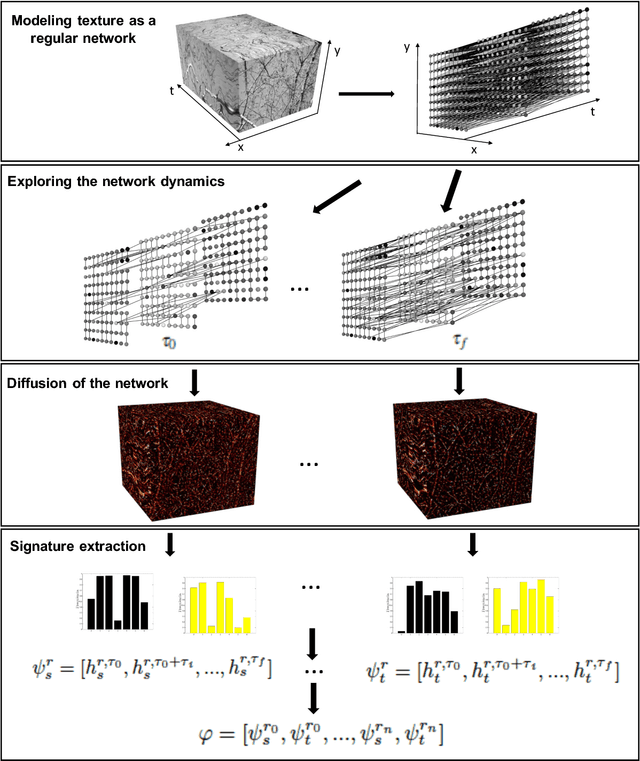

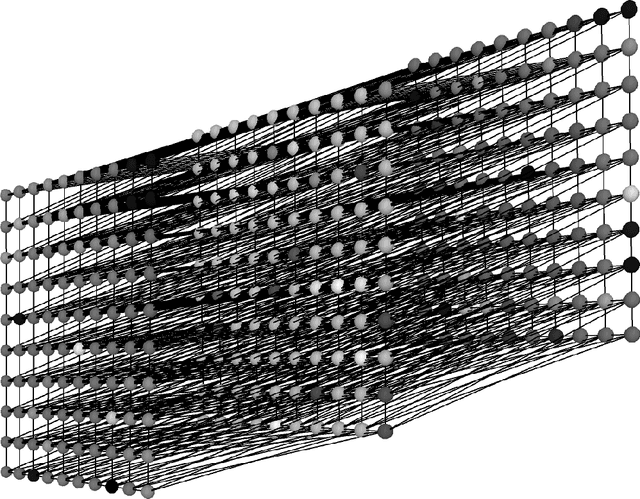
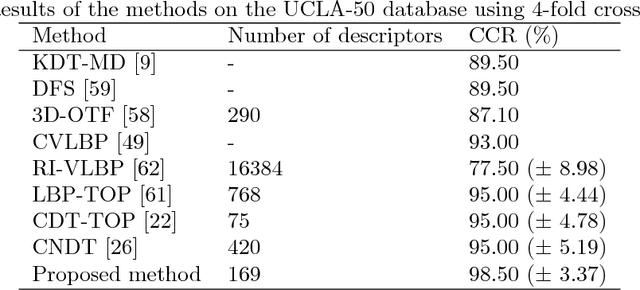
Abstract:Dynamic texture is a field of research that has gained considerable interest from computer vision community due to the explosive growth of multimedia databases. In addition, dynamic texture is present in a wide range of videos, which makes it very important in expert systems based on videos such as medical systems, traffic monitoring systems, forest fire detection system, among others. In this paper, a new method for dynamic texture characterization based on diffusion in directed networks is proposed. The dynamic texture is modeled as a directed network. The method consists in the analysis of the dynamic of this network after a series of graph cut transformations based on the edge weights. For each network transformation, the activity for each vertex is estimated. The activity is the relative frequency that one vertex is visited by random walks in balance. Then, texture descriptor is constructed by concatenating the activity histograms. The main contributions of this paper are the use of directed network modeling and diffusion in network to dynamic texture characterization. These tend to provide better performance in dynamic textures classification. Experiments with rotation and interference of the motion pattern were conducted in order to demonstrate the robustness of the method. The proposed approach is compared to other dynamic texture methods on two very well know dynamic texture database and on traffic condition classification, and outperform in most of the cases.
A smartphone application to measure the quality of pest control spraying machines via image analysis
Dec 16, 2017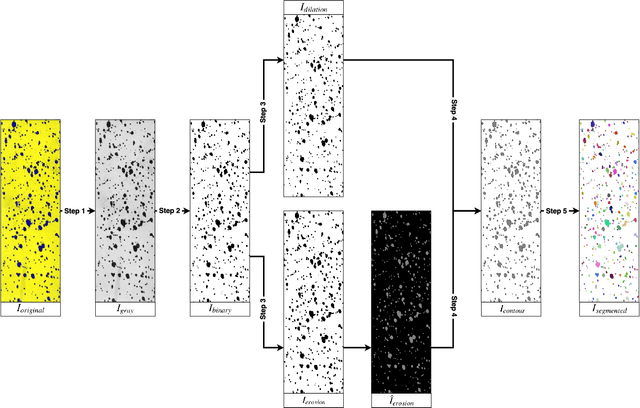

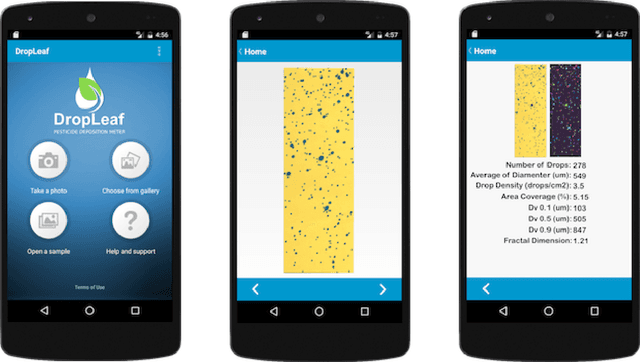

Abstract:The need for higher agricultural productivity has demanded the intensive use of pesticides. However, their correct use depends on assessment methods that can accurately predict how well the pesticides' spraying covered the intended crop region. Some methods have been proposed in the literature, but their high cost and low portability harm their widespread use. This paper proposes and experimentally evaluates a new methodology based on the use of a smartphone-based mobile application, named DropLeaf. Experiments performed using DropLeaf showed that, in addition to its versatility, it can predict with high accuracy the pesticide spraying. DropLeaf is a five-fold image-processing methodology based on: (i) color space conversion, (ii) threshold noise removal, (iii) convolutional operations of dilation and erosion, (iv) detection of contour markers in the water-sensitive card, and, (v) identification of droplets via the marker-controlled watershed transformation. The authors performed successful experiments over two case studies, the first using a set of synthetic cards and the second using a real-world crop. The proposed tool can be broadly used by farmers equipped with conventional mobile phones, improving the use of pesticides with health, environmental and financial benefits.
Multi-q Pattern Classification of Polarization Curves
May 10, 2013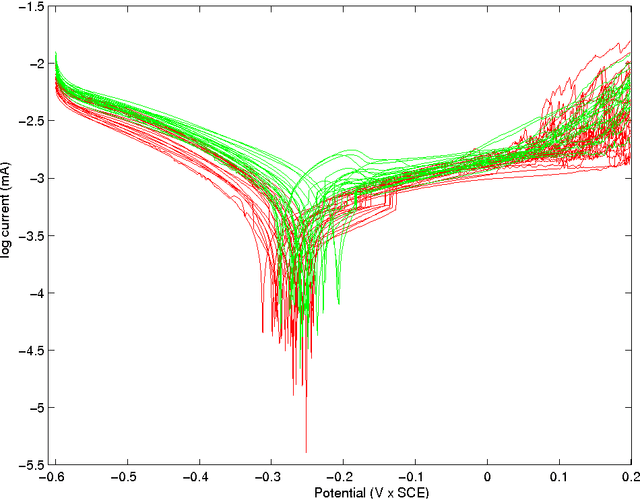

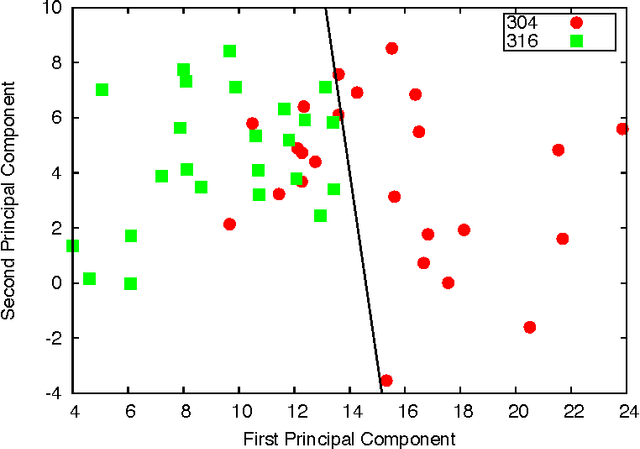
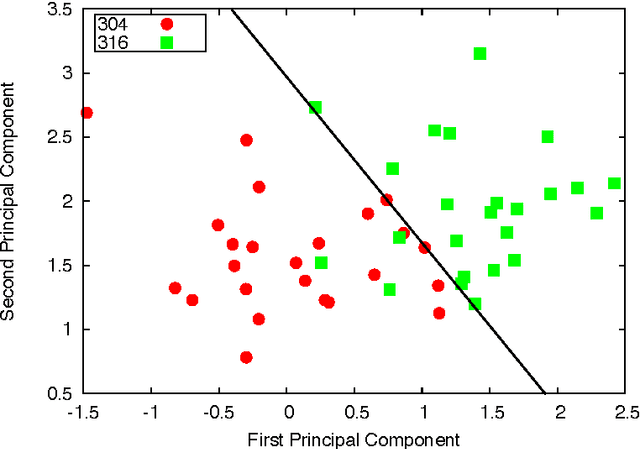
Abstract:Several experimental measurements are expressed in the form of one-dimensional profiles, for which there is a scarcity of methodologies able to classify the pertinence of a given result to a specific group. The polarization curves that evaluate the corrosion kinetics of electrodes in corrosive media are an application where the behavior is chiefly analyzed from profiles. Polarization curves are indeed a classic method to determine the global kinetics of metallic electrodes, but the strong nonlinearity from different metals and alloys can overlap and the discrimination becomes a challenging problem. Moreover, even finding a typical curve from replicated tests requires subjective judgement. In this paper we used the so-called multi-q approach based on the Tsallis statistics in a classification engine to separate multiple polarization curve profiles of two stainless steels. We collected 48 experimental polarization curves in aqueous chloride medium of two stainless steel types, with different resistance against localized corrosion. Multi-q pattern analysis was then carried out on a wide potential range, from cathodic up to anodic regions. An excellent classification rate was obtained, at a success rate of 90%, 80%, and 83% for low (cathodic), high (anodic), and both potential ranges, respectively, using only 2% of the original profile data. These results show the potential of the proposed approach towards efficient, robust, systematic and automatic classification of highly non-linear profile curves.
 Add to Chrome
Add to Chrome Add to Firefox
Add to Firefox Add to Edge
Add to Edge